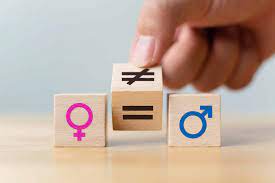Women and Men in India 2022 Report
The Union Ministry of Statistics and Programme Implementation released the Women and Men in India 2022 report on March 16, 2023. The report revealed that India’s sex ratio, or the number of females per 1,000 males, is expected to improve from 943 in 2011 to 952 by 2036. However, the report also highlighted the gender disparity in labor force participation rates in the country.
Improvement in Sex Ratio
The report noted that the sex ratio at birth increased by three points to 907 in 2018-20 from 904 in 2017-19. The projected sex ratio improvement to 952 by 2036 is a positive development, but the report also indicates that women in India are still largely excluded from the labor force, restricting their financial independence.
Gender Disparity in Labor Force Participation Rates
The Women and Men in India 2022 report revealed that women are severely lagging behind men in labor force participation rates. The report showed that the Labor Force Participation Rate for those above 15 years of age has been increasing since 2017-2018. However, the rate was 77.2% for males and only 32.8% for females in 2021-22, with no improvement in the disparity over the years.
The low participation rates for women could be due to social factors, educational qualifications, and gender discrimination in terms of wages and opportunities at the workplace.
Gender Disparities in Wages
The report further highlighted the gender disparity in wages, with men in rural areas earning more than women in urban areas. The average wage earned per day by casual laborers in work other than public works only exacerbates this disparity.
Population Trends
The Women and Men in India 2022 report also features India’s age and sex structure. The population growth, which has been on a downward trend since 1971, is projected to fall further to 0.58% in 2036. The report notes that the population pyramid will undergo a shift, with the base of the pyramid narrowing down while the middle is broadened.
Access to Healthcare
The report also highlights that gender influences people’s access to and experience with healthcare, with women and girls facing more difficulties than men and boys due to restrictions on mobility, lack of access to resources and decision-making power.
Improvement in Age-Specific Fertility Rate
The age-specific fertility rate has improved, with the number of live births in the 20-24 years and 25-29 years age group between 2016 and 2020 reducing from 135.4 and 166.0 to 113.6 and 139.6, respectively. This improvement is likely due to economic independence through proper education and securing a job.
Month: Current Affairs - March, 2023
Category: Reports & Indexes Current Affairs


